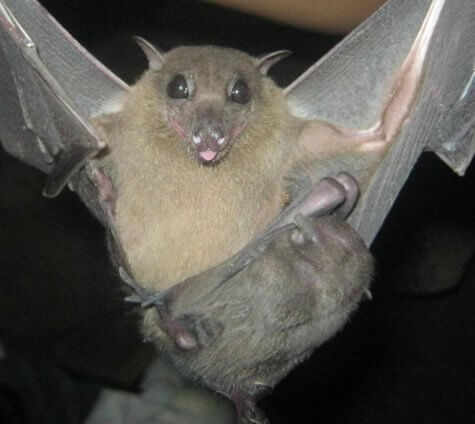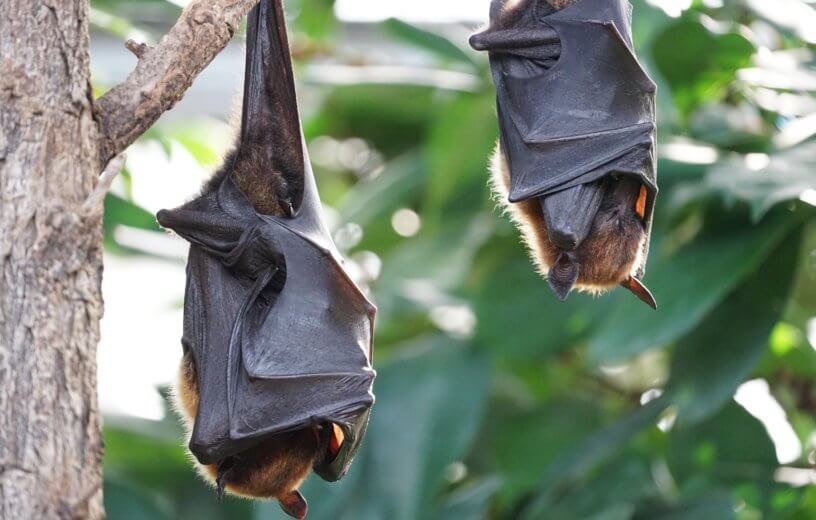CHICAGO — Bats perform many crucial ecological functions, from pollinating plants to eating disease-carrying insect to helping regenerate tropical rainforests. But as we’ve come to learn in recent months, they’re also natural carriers of coronaviruses, and as a new study shows, that’s been the case throughout the planet’s history.
Researchers from Field University in Chicago compared the different types of coronaviruses in 36 bat species living in Eastern Africa. They found that different genera and in some cases different families of bats had carried their own unique strains of coronavirus. One strain from bats in China is of course the virus behind COVID-19. The scientists believe that their findings show that bats and coronaviruses have been evolving symbiotically for millions of years.

“We found that there’s a deep evolutionary history between bats and coronaviruses,” says one of the researchers, Steve Goodman, a MacArthur Field Biologist at the Field Museum, in a statement. “Developing a better understanding of how coronaviruses evolved can help us build public health programs in the future.”
Goodman worked with scientists at the Université de La Réunion, Léa Joffrin and Camille Lebarbenchon, who led the research and conducted genetic analyses of the coronaviruses.
Many people are using “coronavirus” and “COVID-19” interchangeably, but there are actually thousands of types of coronaviruses, most of which can’t be transmitted to humans. The scientists studied coronaviruses that aren’t behind the COVID-19 pandemic to understand the relationship between coronaviruses and bats to learn more about the particular coronavirus shutting the world down today.
All animals have some viruses living inside them. Bats’ coronaviruses don’t seem to harm them, but, as we saw with COVID, these viruses can jump species and sicken other animals. The study analyzed the genetic relationships between coronavirus strains and their animal hosts, which the research team believes will help them better understand how these viruses are passed from animals to humans.
Goodman and his team collected swab and blood samples from over a thousand bats living on islands in the western Indian Ocean and the coastal areas of Mozambique. Eight percent of the bats they tested carried a coronavirus. After analyzing the coronaviruses living in these bats, they compared the bat-borne coronaviruses with those carried by other mammals, including dolphins, alpacas, and humans. They then built a coronavirus family tree showing how many different types of coronaviruses are related to each other.
“We found that for the most part, each of the different genera of families of bats for which coronavirus sequences were available had their own strains,” says Goodman. “Moreover, based on the evolutionary history of the different bat groups, it is clear that there is a deep coexistence between bats (at the level of genus and family) and their associated coronaviruses.”
Fruit bats belonging to the family Pteropodidae from different islands and continents carried different coronaviruses than other groups of bats living in the same geographical zones, for example. In rare cases, bats belonging to different families, genera, and species living in the same caves shared the same strain of coronavirus, but the researchers say this appears to be the exception, not the rule.
Goodman warns that we shouldn’t try to cull bat populations to avoid another COVID-19 pandemic in the future: “There’s abundant evidence that bats are important for ecosystem functioning, whether it be for the pollination of flowers, dispersal of fruits, or the consumption of insects, particularly insects that are responsible for transmission of different diseases to humans. The good they do for us outweighs any potential negatives.”
The study was published in the journal Scientific Reports.
Like studies? Follow us on Facebook!
